As the UNESCO comments:
Seven properties built by the architect Antoni Gaudí (1852–1926) in or near Barcelona testify to Gaudí’s exceptional creative contribution to the development of architecture and building technology in the late 19th and early 20th centuries. These monuments represent an eclectic, as well as a very personal, style which was given free reign in the design of gardens, sculpture and all decorative arts, as well as architecture.
His work is rooted in the particular character of the period, drawing on the one hand from traditional Catalan patriotic sources and on the other from the technical and scientific progress of modern industry. Gaudí’s work is a remarkable reflection of all these different facets of society and has a unique and singular character. In fact, his works are particularly associated with Modernisme, and in this sense, Gaudí can be regarded as the most representative and outstanding of the Modernista architects.
Gaudí’s work is an exceptional creative synthesis of several 19th-century artistic schools, such as the Arts and Crafts movement, Symbolism, Expressionism, and Rationalism, and is directly associated with the cultural apogee of Catalonia. Gaudí also presaged and influenced many forms and techniques of 20th-century Modernism.
在巴塞罗那市区或近郊的7处安东尼·高迪的建筑作品,见证了他对19世纪末和20世纪初建筑技术的杰出创意与贡献。圭尔公园、圭尔宫、米拉大楼、文生宅圣家大教堂、巴特里奥之家和克洛尼亚古埃尔宫,这些建筑物都呈现了折衷主义风格,非常人性化,这对花园、雕塑以及所有装饰艺术和建筑的设计产生了极大影响。
In total there are 7 properties designed by Antoni Gaudí which are inscribed in the UNESCO World Heritage list. They are, Gaudí’s work on the Nativity façade and Crypt of La Sagrada Familia, Park Güell, Palau Güell, Casa Mila, Casa Vicens, Casa Batlló and Crypt in Colonia Güell.
Luckily, many thanks to the developed tourism industry of Barcelona, I was able to visit almost all the properties except Casa Vicens, which was still under reconstruction. It was a pity that I could only take a look at the exterior of the building but later on I read more about the interior on books. Hopefully when you visit Barcelona, the door of Casa Vicens will be open to you already.
In order to provide an insight into how to explore the works of Gaudí in a more organized manner, I’d like to write about these 7 properties in 6 not-too-long posts, namely “la Sagrada Familia”, “Casa Mila”, “Casa Batlló”, “Park Güell”, “Palau Güell”, “Crypt in Colonia Güell and Casa Vicens”, just in case if you only want to visit some of the 7 buildings, you don’t need to scroll down a super-long post to find out where to go or what to see.
My general structure of introducing these properties would be first of all, some practical information based on my own experience such as opening hours and buying tickets. Secondly, I’ll focus on what I’ve learnt from my visit (audio guide or books) and I’ll try offering some highlights combined with pictures. I believe in this way, it’s easier to understand the cultural and historical value of Gaudí’s works and his influence. If you have any questions, please do not hesitate to contact me and I’ll try my best to provide some solutions. Now, let’s start our journey of exploring the masterpieces of God’s architect, Antoni Gaudí.

La Sagrada Familia is undoubtedly the most popular tourist attraction in Barcelona or even in whole Spain. However, do you know why it has gained this reputation? Since its first stone laid in 1882, it’s been more than 130 years and yet the basilica is not finished. Antoni Gaudí took over this project in 1883 and devoted all his life to it till his tragic death in 1926. In 1889, the crypt was completed and in 1925, the first tower dedicated to Sant Bernabé was completed. From 1936 to 1940, the Spanish Civil War destroyed the crypt and Gaudí’s studio and after the war, collaborating architects and Gaudí’s disciples started the restoration work. In 2010, the basilica was consecrated by Pope Benedict XVI.
Surely, la Sagrada Familia has gone through its ups and downs and it has already witnessed the changes of Barcelona for 135 years. It is said that the basilica is expected to be completed in 2026, on the 100-year anniversary of Gaudi’s death. What surprised me most is that the construction of the basilica is dependent on us, the tourists and private donors, instead of the government.
1. Practical information
As the most popular tourist attraction in Barcelona or in Spain, you should not expect that you can just buy the ticket at the ticket office and then just enter. However, the key to ensure your smooth visit is to book your ticket online.
The procedures for booking tickets online are as following:
- Go to the official website sagradafamilia.org/tiquets
- Choose your ticket type
- Pick the day you want to visit and choose your access time
- Buy your ticket
- Show your tickets on your smart phone and enter
When I was there, the ticket office was even closed because all tickets for that day were sold out. If you are staying in Barcelona for a few days you can still book tickets online for the day after tomorrow but if this is your last day in Barcelona you might even risk losing the opportunity to visit this must-see masterpiece. Again, the best solution is to book online. Booking your ticket online gives you three major advantages. One is that you need to choose a specific slot of time when you book your ticket so you can arrive on time for your chosen time and you don’t need to wait in a long line like some other famous attractions elsewhere. The second advantage is that booking a specific slot of your visit is like reserving a seat or place in a theatre and you are guaranteed of your visit. The third advantage is that booking your ticket online is cheaper than buying your ticket on site. However, if you somehow fail to book your ticket online you can try your luck at the ticket office on site. Keep in mind that the ticket office is located on the Provença street, that is to say, when you are facing the Nativity Façade, the street where the ticket office is located is on your right. Do go there early in the morning as there might be more chance for you to get a ticket.
1.1 Opening hours
November – February: 9:00 – 18:00, last admission 17:00
October and March: 9:00 – 19:00, last admission 18:00
April – September: 9:00 – 20:00, last admission 19:00
25th and 26th December/1st and 6th January: 9:00 – 14:00
1.2 Different ticket types and prices
There are in total 5 different types of tickets:
- Ticket for Sagrada Família + Towers + Audioguide: 29€
- Ticket for Sagrada Família + Audioguide + Ticket for Gaudí House Museum: 24€
- Ticket for Sagrada Família + Guided tour: 24€
- Ticket for Sagrada Família + Audioguide: 22€
- Ticket for Sagrada Família: 15€
The following people may enter free of charge:
- – Children 10 and under
- – Disabled (accredited 65% or higher + 1 companion – accreditation from all countries accepted)
- – ICOM members (International Council of Museums)
- – Barcelona Press Cardholders
- – Unemployed (Wednesdays from 2:00 pm)
Discounts:
- – Students: all valid national or international student cards accepted
- – Seniors: foreign ID accepted but the discount is only applicable from 65 years old as this is the age of retirement in Spain
- – Under 30 years old
For more information about tickets for groups or school tickets please click here.
According to my own experience, either a guided tour or an audio guide is necessary and strongly recommended. As for going up to the tower, there are two options, that is to say the Nativity Façade and the Passion Façade. The guy at the ticket office recommended going up to the Nativity Façade but because my friend bought the ticket to go to the Passion Façade, I chose to go together with him. Because the basilica is still under construction I wouldn’t say the view on top is so spectacular. Maybe the view on the Nativity Façade is better. However, in order to experience the towers and the spiraling staircase, spending an extra 7 euros is not a bad idea. Also, there’s a lift bringing you up and you only need to walk down the tower so it’s not that tiring as you have imagined. Anyway, as for me, I’d love to experience every corner of this wonderful masterpiece so I wouldn’t miss any opportunity to get a closer look at it. Do keep in mind to be at the basilica and the lift to the tower on time, otherwise you might miss your “reserved seat”.
1.3 How to get here
- Metro: L2 or L5 to Sagrada Familia
- Bus: 19, 33, 34, 43, 44, 50, 51, B20 or B24
2. Explore La Sagrada Familia – the masterpiece by Gaudí
In this chapter, I’ll combine what I saw and heard during my visit and the description and explanation written by Juan-Eduardo Cirlot, Pere Vivas and Richard Pla in their book “Complete Works Gaudí” and by Gabi Beneyto and Daniel Giralt-Miracle in their book “3D Magic Gaudí”, to offer you a glimpse of what you can expect in this masterpiece.
As the only unfinished work inscribed into the UNESCO World Heritage list, you can imagine how marvelous it is. Having been to St. Peter’s Basilica in Vatican, Milan Cathedral in Milan, Basilica of Saint Paul Outside the Walls in Rome, Florence Cathedral in Florence, Cologne Cathedral in Cologne, St Paul’s Cathedral in London, Notre Dame de Paris in Paris, Westminster Cathedral in London, Frauenkirche in Munich and so on, I was still shocked when I saw the façades of la Sagrada Familia and its interior. Though unfinished, its greatness already overwhelmed me.
When La Sagrada Familia is completed, it will be the tallest religious building in Europe. The central tower in the middle is designed to be 170 m tall, only one meter shorter than Montjuïc, the mountain in Barcelona, which is also the city’s highest point. Why not adding 1 or 2 meters and making it the highest point in Barcelona? This is because Gaudí believed that no work of human beings shall transcend the work of God. When La Sagrada Familia is completed, it will have 18 towers. 12 of them will represent the apostles, four of them will represent the evangelists, one will be designated for the Virgin Mary, and of course the last one, the highest one in the middle, will represent Jesus Christ. Unfortunately, at this moment, there are only 8 towers completed.

As I mentioned before, joining a guided tour or renting an audioguide is strongly recommended. There are in total 7 audioguide stops and once you enter from the Nativity Façade, on your right is the place to pick up audioguides and on your left is the visitor information center, where you can get brochures in various languages which include brief introduction and the basilica map. According to my own experience, the most interesting and worth-visiting spot are the Passion façade, the Nativity façade, the Portal of Glory, the Interior of the Basilica, the Apse, and the Museum. In this post, I won’t give a detailed introduction to the museum because I’m planning to include it in another post which focuses on museums or experience centers about the life and works of Gaudí.
Undoubtedly, Antoni Gaudí transformed this neo-Gothic church into one of the most spectacular, monumental and innovative modern churches, using unique structures and building techniques. The Nativity façade, Passion façade, and Glory façade depict the life, death and resurrection of Jesus and although he died before the basilica was finished, he left enough information for the architects of the next generations to finish his dream.
2.1 the Nativity façade
The eastern façade was built when Gaudí was still alive and it explains the birth of Jesus. You can hear more about this façade at audioguide stop 3. This façade is filled with symbolism and make sure to follow the audioguide closely, otherwise you might “get lost”. The towers of the façade, the Hosanna Excelsis, the ox, the mule, the pelican, the musician angels, the birds, the soldier’s foot with 6 toes, almost every detail symbolizes something connected to the life of Jesus. The anagram of the holy trinity crowns the cypress. The letter “T” represents God the father, the letter “X” represents the son and the dove represents the holy spirit.
Also, do you know that the the figures of the Nativity façade are made from moulds of people?


As the pictures shown above, the 3 porticos are devoted to Mary, Joseph and Jesus and represent faith, hope and charity. The cypress stands out, the tree of life and open arms sign that this basilica welcomes all visitors. If you take a look at the info board located close to the audioguide stop 3 you will see an explanation of what these sculptures represent. You will see the wedding of Mary and Joseph, the flight to Egypt, the massacre of the innocent, the annunciation of Virgin Mary, the nativity, the adoration of Magi, the adoration of the shepherds, the presentation of Jesus in the temple, Jesus preaching in the temple, Mary’s visit to Elizabeth, Jesus working as a carpenter, the cypress, the tree of life etc.
2.2 The Passion façade
Devoted to the passion, death, resurrection and ascension of Jesus, the Passion façade features a great narthex supported by 6 columns and an upper narthex of eighteen columns. The sculptures and bronze doors here were created by sculptor Josep Maria Subirachs. What’s especially worth noticing here are the Roman soldiers which are imitating the chimneys of Casa Mila, a tribute paid to Gaudí by Subrirachs. Also, Subrirachs used a special optical effect, which enables the eyes of Jesus printed on the veil of the Veronica always look at its spectators.



In 1911 Gaudí became ill and during that period of time, he imagined the Passion façade. As he said:
” I am prepared to sacrifice the very construction, to break vaulting and cut columns to give an idea how cruel sacrifice is.”
The 18 columns supporting the upper narthex are like the ribs of human beings and all the sculptures tell the story of the passion, death, resurrection and ascension of Jesus.
The four bell towers on this façade are devoted to the apostles James, Bartholomew, Thomas and Philip. Between these towers, we will be able to see the tallest tower of la Sagrada Familia once it’s finished and the second tallest one dedicated to Mary is rising.
Close to the audioguide stop 7, like the one close to the Nativity façade, you will be able to see an information board which explains the sculptures on the Passion façade. You will be able to see the last supper, the arrest of Jesus, the betrayal of Judas, the flagellation, the denial of Peter, the Ecce Homo, the judgement of Pilate, the fall of Jesus, Veronica with the veil of Jesus, Longinus on a horse, the soldiers playing for the tunic of Jesus, Christ crucified, the descent from the cross and the entombment, the ascension of Jesus, and so on. If you can’t follow the audioguide closely, it might be a better idea to look this information board at your own pace.
2.3 The interior of the basilica
The floorplan of this basilica is designed like a latin cross and the interior is designed like a forest, with branching columns rising up from 15 meters tall in the choirs surrounding the inside of the basilica (imagine how marvelous it will be when all the people in the choirs are singing) and 75 meters tall in the apse. This innovative structural solution allows the sunlight to flood in through the windows.



This work combines the essence of Gaudí’s knowledge and constructive experience, featuring the tree-shaped columns that support the vaulting and the side windows that filter and distribute the light. As Gaudí has wished, the lighting in the interior of the basilica should simulate the lighting in a forest, where the light is filtered by the leaves of the trees. In the north-east corner, Gaudí set up his workshop and he devoted his last period of time here working days and nights. Unfortunately, this workshop was burnt down during the Spanish Civil War in 1936 and a major part of this project was lost. However, this didn’t stop the people to accomplish Gaudí’s dream.
2.4 The apse
Composed of the presbytery, the ambulatory, seven apse chapels and a choir, here you can see the organ, the main altar and the baldachin with the terra-cotta Christ presiding over the altar. Wanna know what the animals on the columns refer to? Wanna know what the golden panels on the dome represent? The audio guide will give you more information about what these symbols inside the church mean.


2.5 The Portal of Glory
Located opposite to the apse, once the basilica is completed, this portal will be the main entrance. The seven bronze doors are created by Josep Maria Subirachs and the middle one features the full Lord’s prayer in Catalan and the excerpt “Give us, Oh Lord, our daily bread” in fifty different languages, demonstrating the brotherhood between cultures. Inside the basilica you will be able to see the reproduction of the central door on the Glory façade, the main façade, which tells the story of humanity and shows the paths to eternal happiness.

2.6 The Passion Tower
As I mentioned before, because I needed to go with my friend, I chose to go up to the tower on the Passion façade. However, considering the Nativity façade is already finished the it is recommended by the guy at the ticket office, it’s likely that the view from the Nativity tower is better. Anyway, going up to the Passion tower is still worth it considering the fact that I could reach the statue of Jesus on ascension and I walked inside a gigantic stone snail (the dizzy spiral stairs inside the towers).




Because of the construction work, I wouldn’t say that the 360-degree view over the city is the best. However, it gave me an opportunity to explore the towers, the façades, the decorations of the church more closely and deeply. There are details about la Sagrada Familia that you can’t see or can’t see clearly when you are just in or around the church on the ground. Choose a sunny day if it’s possible and I believe you will have a better experience. If you have been to the Nativity tower, please tell me about your opinion as for how the view is from there.
2.7 Cloister of Dolours and sacristy
The Cloister of Our Lady of Dolours is connected to the sacristy, a bright room where priests prepare for a service, and where vestments and articles of worship are kept.
The sacristy will be 40 meters high once it’s finished and is formed with an intersection of 12 paraboloids joined in the upper vertex. This form is highly resistant is also what Gaudí proposed for the construction of the central towers.

2.8 The school
This building was designed by Gaudí in 1909 notable for its curved, naturalistic shapes. The school was used to teach the children of the workers and of the neighbors.
2.9 The museum
As I mentioned above, I’d like to introduce this museum together with other museums and experience centers connected to the life and works of Gaudí. What I can tell you here is that this museum is rally worth visiting and the entry ticket is included in the entry ticket to the basilica.


No matter how many churches you’ve been to in the world, I can assure you that la Sagrada Familia will surprise you as it did to me. I can hardly imagine how marvelous it will look once it’s finished. Most most importantly, book your ticket online to ensure your smooth and successful visit. I wish you a great time in la Sagrada Familia.
This post is one of my 6 posts concerning the 7 Works of Antoni Gaudí protected by the UNESCO. If you are interested, please click on the following properties to read more about them.
- Nativity façade and Crypt of La Sagrada Familia
- Casa Mila
- Casa Batlló
- Park Güell
- Palau Güell
- Crypt in Colonia Güell and Casa Vicens
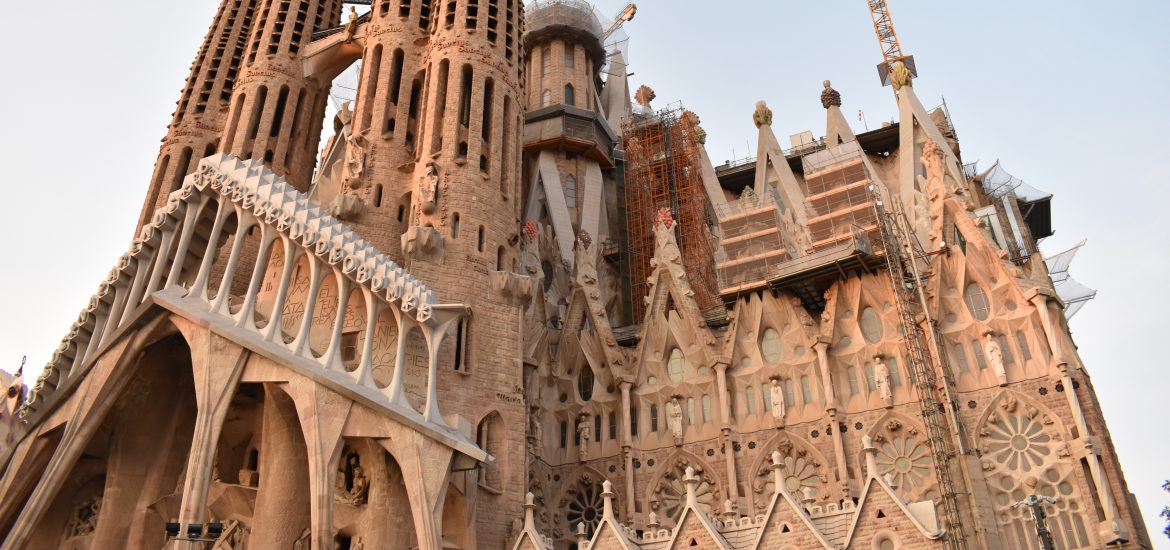




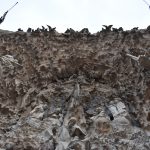








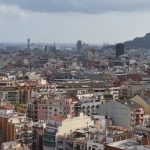

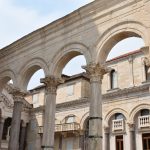
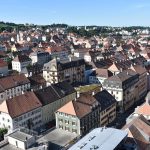

[…] Nativity façade and Crypt of La Sagrada Familia […]
[…] Nativity façade and Crypt of La Sagrada Familia […]
[…] Nativity façade and Crypt of La Sagrada Familia […]
[…] Nativity façade and Crypt of La Sagrada Familia […]
[…] Nativity façade and Crypt of La Sagrada Familia […]
[…] Nativity façade and Crypt of La Sagrada Familia […]